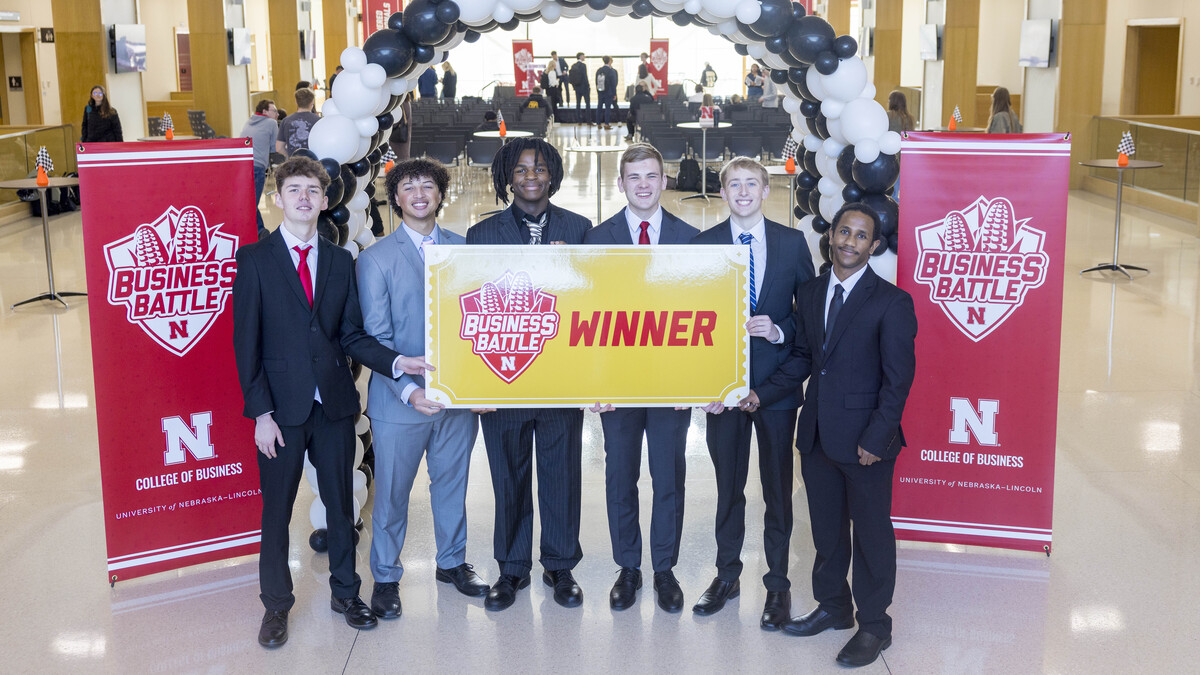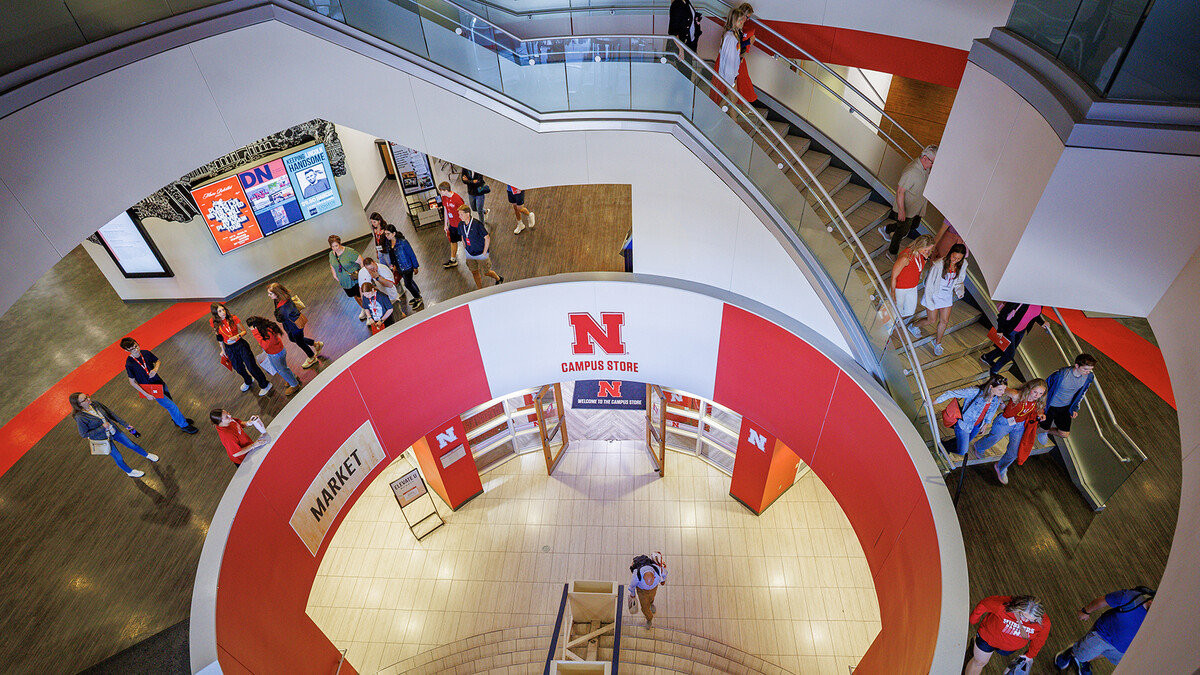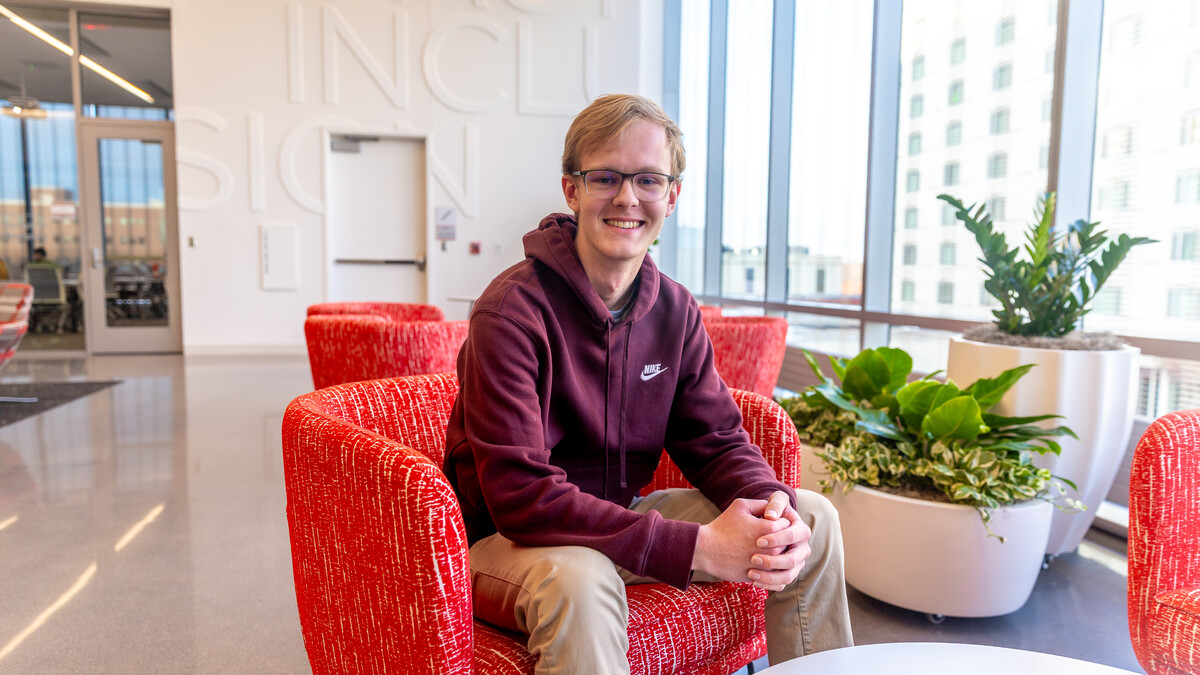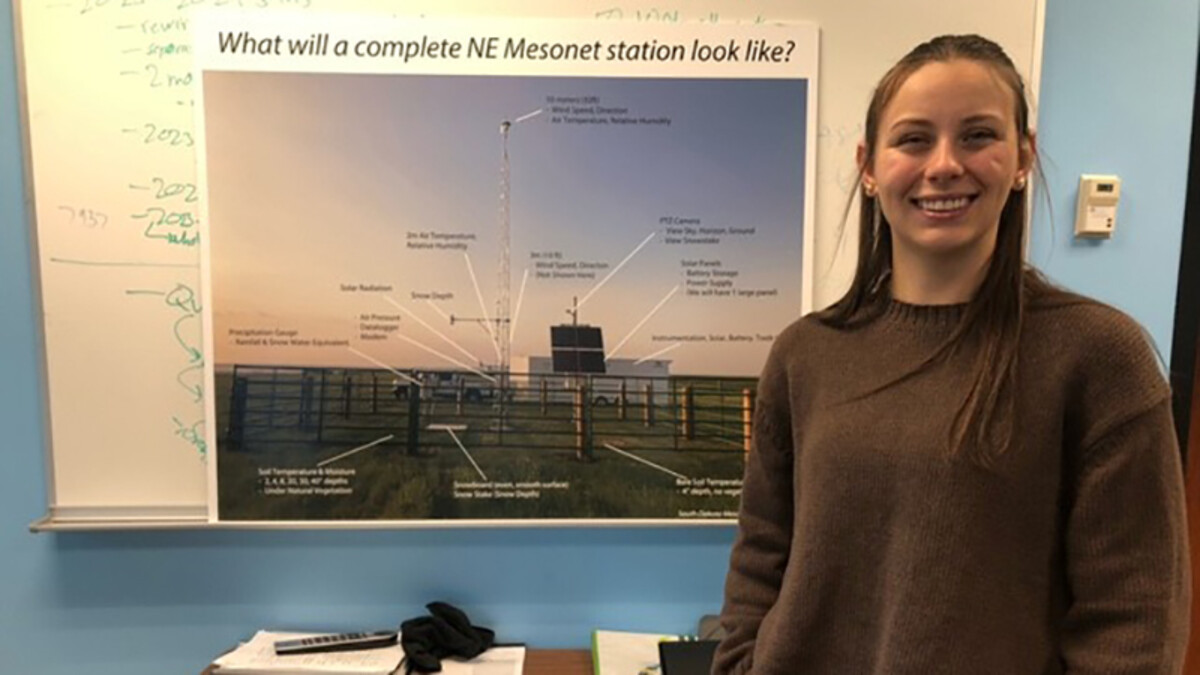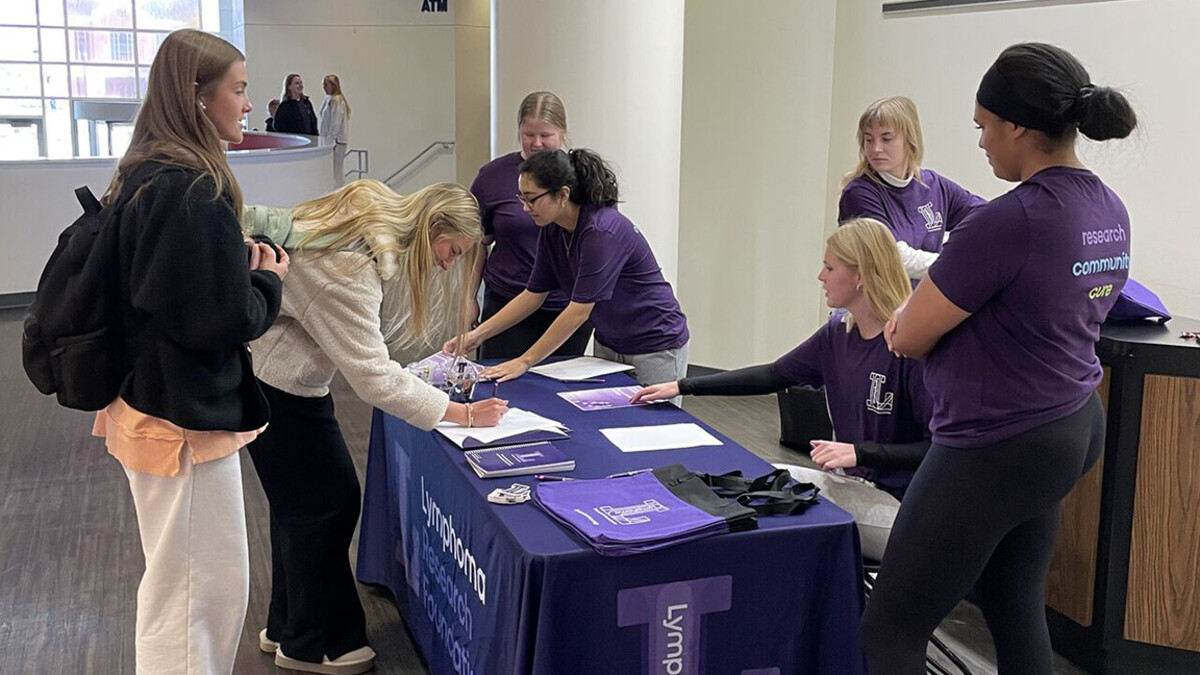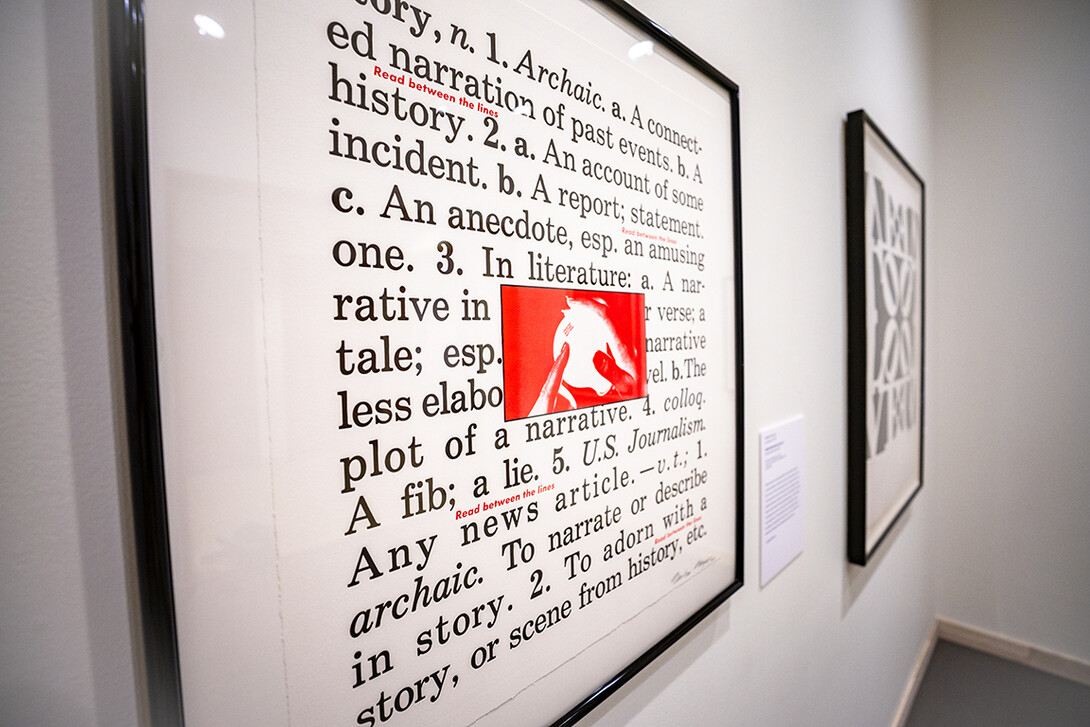
An exhibition at Sheldon Museum of Art takes student work from the classroom to the community.
“Characters Through Time: The Art of Typography” examines typography and its history. Students in the fall 2024 Typography I class taught by Stacy Asher, associate professor of art in the School of Art, Art History and Design, curated the exhibition to share lessons from the classroom about how the pervasive medium — sometimes intended as purely functional — can also be viewed as art.
“A lot of people don’t look at a poster or a billboard and notice the typeface they use, but if they come in here they’re going to read these descriptions and it’s going to teach them about why (the artist) chose this specific typeface for this certain poster or art project, and that might encourage them to learn a little bit more about typography,” said Logan Aaberg, a third-year graphic design student from Fullerton.
Works in the exhibition depict a wide range of styles and uses of typography, from advertising to comic books to window painting, spanning more than a century. Students had the opportunity to explore Sheldon’s collection to select a piece. Asher said the exercise connected with her course material by allowing the students to dive deep into the history and context of their chosen work.
“We start looking at a broad history, going all the way back to the first evidence of writing systems and how words were communicated through cut stone or movable type and the first printing all the way through the present,” Asher said. “Why was the typeface designed? When was it designed? By whom and for whom? Who was reading it? That’s part of the analysis.”
The Charlotte and Charles Rain Gallery, where the exhibition is on view, is regularly used for student-organized shows. This could include groups like classes or Sheldon’s student advisory board. Erin Hanas, curator for academic and campus engagement, said the space offers Sheldon an opportunity to be a venue for members of campus to share their academic work.
“We’re both part of campus and part of the bigger community,” Hanas said. “We get to be a site that is facilitating dialogue between what’s happening in the classroom and what will be disseminated and seen. There’s something really unique (for students) about being able to say, ‘I was part of curating an exhibition.’”
Aaberg selected “Black and White Love” by Robert Indiana. This print is an early version of the stacked “LOVE” design with a tilted letter O, most widely known by the sculptures in New York City and Philadelphia that share the design. Aaberg was struck by the kaleidoscopic effect of the image and how the typeface Indiana used appeared to be one of his own design. The design’s evolution over the years also interested Aaberg.
“I thought it was interesting how it went from a Christmas card for friends and family all the way to a metal sculpture,” she said. “Everyone’s typeface was different but this taught us to look at the stems, or width a letter has for what purpose.”
Exploring the collection and its variety helped students learn more about their own style, Aaberg said, and the selection now on view reflects each student’s personality and interests.
“It gave us insight into what typeface we found most attractive, so that gave us a baseline of what inspired us to choose the piece we did,” she said.
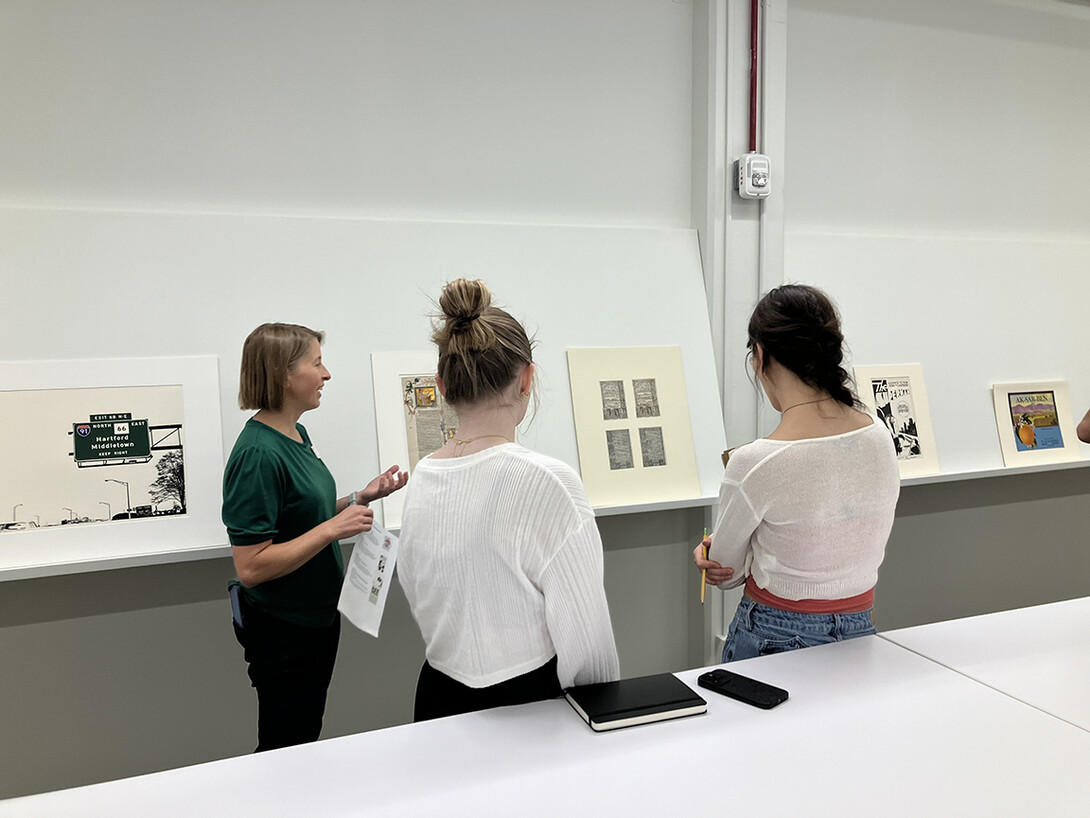
Hanas also worked with the students to write and revise their accompanying text. She said she was able to teach the students about how museums think about works and how that style of writing differs from, for example, a paper they might write for class. They worked through several drafts over the course of the semester to formulate a concise, focused text appropriate for an exhibition space. Asher appreciated how this helped her students learn more about the process of writing about art.
“They’re really thinking about the audience,” Asher said. “We invited people to read it, so we want to make sure it’s well-written, easy to understand and entertaining or engaging…It helps them pull out their best writing and give it another pass and take suggestions and be open to looking a little deeper. (Sheldon staff) was also really sensitive to maintaining the voice and the tone and the style of the students’ writing.”
Collaborating with Sheldon is an opportunity for her students to engage with a world class museum, Asher said, and interact with professionals in the art field.
“This is a great resource for the state of the Nebraska, for the university and the community,” she said. “They’ve been great about making it a space for interaction, engagement and learning.”
A museum exhibition is an opportunity to pull back the curtain and display the efforts of university students that might only otherwise be seen by their professor, Hanas said.
“They get to share their work in this public forum and they’re building on skills they’re developing in the classroom in a different setting, so they’re strengthening their communication, critical thinking, close looking, all of those skills that will translate to whatever it is they do in the future,” Hanas said.
“Characters Through Time” is open at Sheldon Museum of Art through July 13.
![(Top) “Les Georgiques de Virgile [The Georgics of Virgil]” by Aristide Maillol. (Bottom) “Superman” by Joseph Shuster.](/sites/default/files/styles/wide/public/media/images/250408_Characters%20Through%20Time%20Exhibit_012.JPG?itok=PYz9EDPH)

